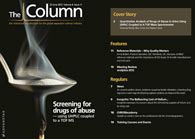Frog legs
Frog legs are a well known delicacy of both French and Cantonese cuisine.
Frog legs are a well known delicacy of both French and Cantonese cuisine. However, the farming of frog legs is not tightly controlled and residues of veterinary drugs above the acceptable level have been found in imports. A team of scientists from the USA has therefore developed a liquid chromatography quadrupole time‑of‑flight (Q-TOF) mass spectrometry method to analyse the drug residues found in frog legs.1
First, several veterinary drugs were selected as target compounds to validate the method, including trimethoprim, sulfamethoxazole, chloramphenicol, quinolones and FQs. Tissue was extracted from the store-bought samples with dilute acetic acid and acetonitrile with added sodium chloride and then centrifuged. The extracts were then evaporated and reconstituted in mobile phase. The team evaluated the data collected by comparing the accurate mass and retention times of compounds to a database containing information for veterinary drugs. They found that the target compounds were consistently at higher than acceptable levels and they were able to estimate the amount of residue present. This method was then used to analyse imported frog legs and many of the residues were found in the samples, often in combination and at high concentrations (> 10 ng/g).
The team concluded that this was a good method that provided excellent sensitivity when compared with alternative MS procedures.
1. Justin R. Carr et al., Journal of Agricultural and Food Chemistry, 60(18), 4430–4439 (2012).
This story originally appeared in The Column. Click here to view that issue.
Measuring Vitamin K1 Concentrations in Dogs with Chronic Enteropathy Using LC–MS/MS
May 14th 2025A joint study between the University of Tennessee (Knoxville, Tennessee) and the University of Pennsylvania School of Veterinary Medicine (Philadelphia, Pennsylvania) compared directly measured vitamin K1 (vitK1) concentrations in healthy dogs and dogs with chronic enteropathy (CE) using liquid chromatography tandem mass spectrometry (LC–MS/MS); they also investigated whether supplementation of vitK1 in dogs with CE would significantly increase vitK1 concentrations.
HPLC 2025 Preview: Fundamentally Speaking (Part 2)
May 14th 2025Michael Lämmerhofer from the Institute of Pharmaceutical Sciences, University of Tübingen, Germany, spoke to JFK Huber Lecture Award winner of 2024 Torgny Fornstedt, professor in analytical chemistry and leader of the Fundamental Separation Science Group, Karlstad University, Sweden, about his pioneering work in high performance liquid chromatography (HPLC) with a focus on fundamentals, ion-pair chromatography, and oligonucleotide applications.

.png&w=3840&q=75)

.png&w=3840&q=75)



.png&w=3840&q=75)



.png&w=3840&q=75)











